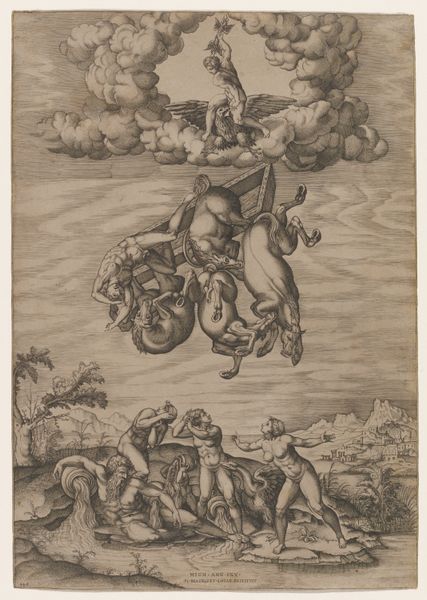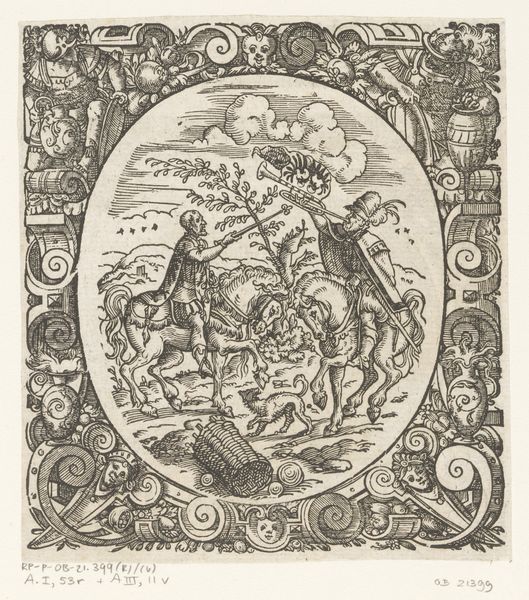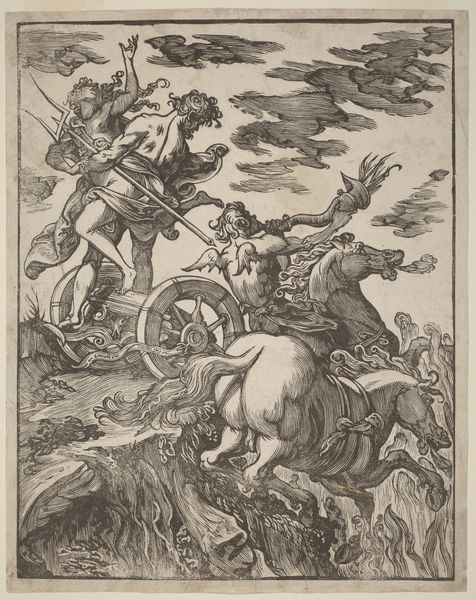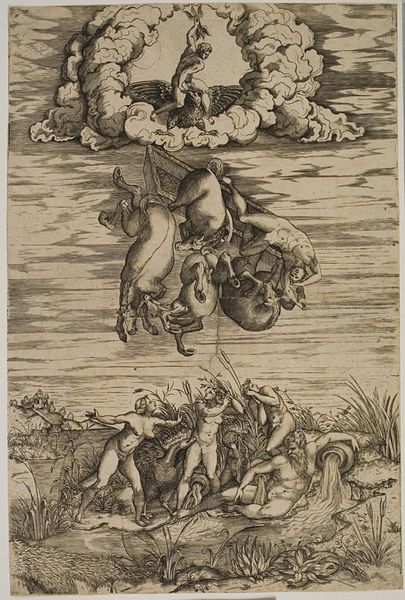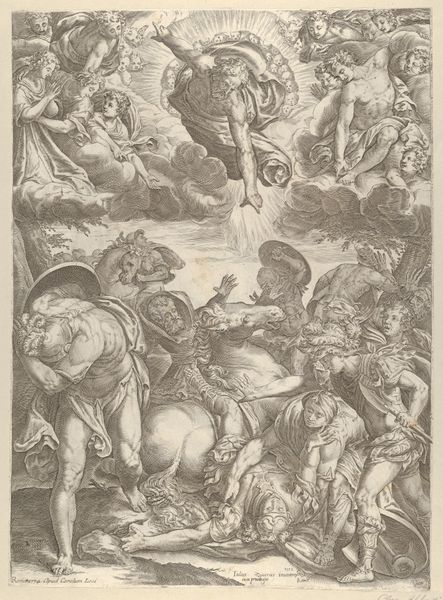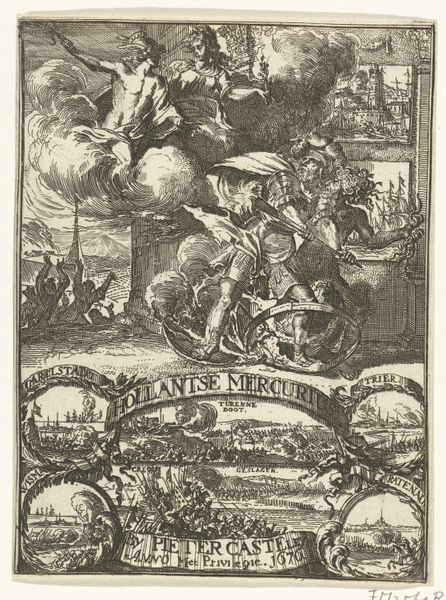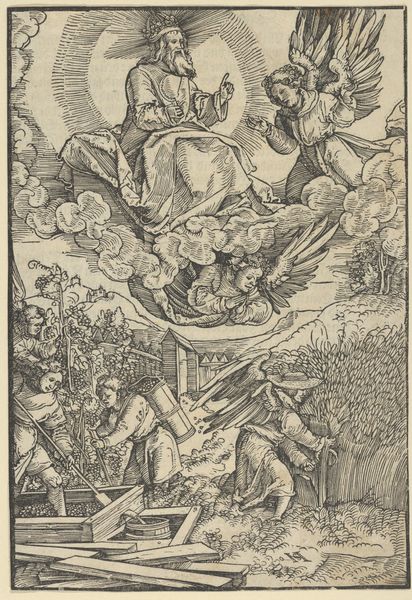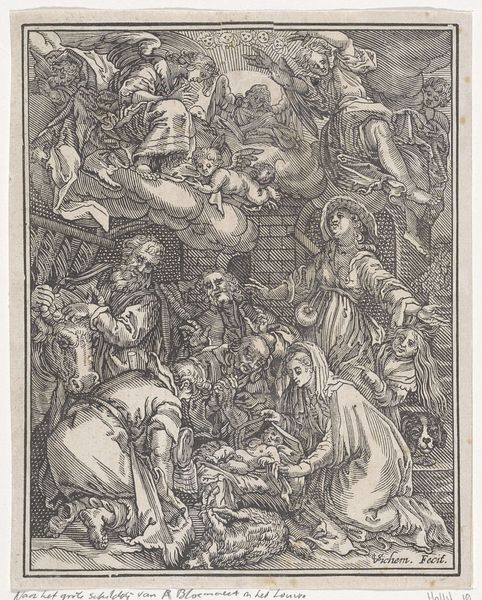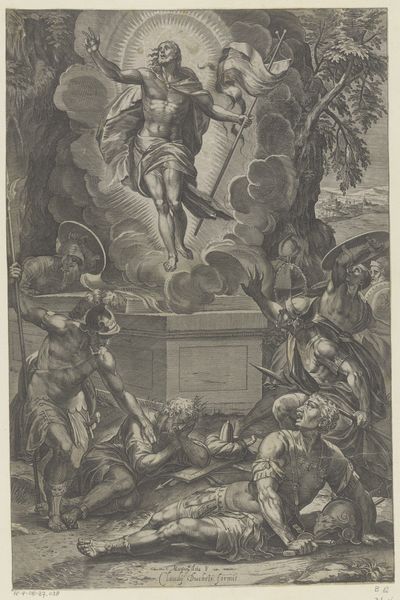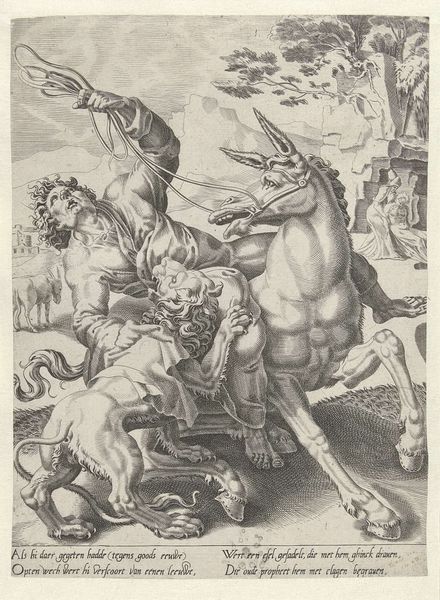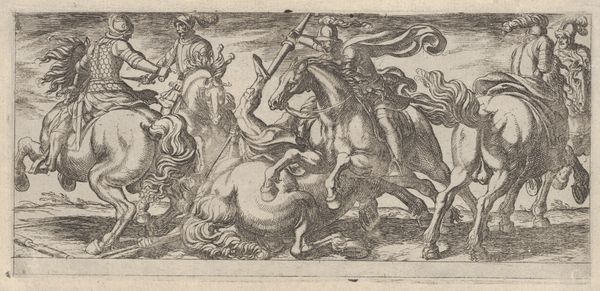
drawing, print, engraving
#
drawing
# print
#
landscape
#
figuration
#
mythology
#
history-painting
#
italian-renaissance
#
engraving
Dimensions: 8 9/16 x 5 3/8 in. (21.7 x 13.7 cm)
Copyright: Public Domain
Curator: Welcome, everyone. Today we're exploring an engraving of the Italian Renaissance titled "Phaeton", attributed to Agostino Veneziano and created sometime between 1514 and 1536. Editor: My first impression? Chaotic energy. The figures are so active, there's a sense of impending doom even without knowing the myth. The sharp lines of the engraving really amplify that feeling of agitation. Curator: It's based on the classical myth of Phaeton, son of Helios, the sun god, who tragically loses control of his father’s chariot. Note the horses are not just pulling; they're rearing up, wildly out of control, and Phaeton himself is barely holding the reins. It visualizes a disruption of cosmic order. Editor: And consider the labor. Look at all those individual lines the engraver carefully placed to create light, shadow, texture. The swirling clouds alone must have taken incredible patience. This piece wasn't just a design; it was a physical act, a slow process. Engraving, like so many forms of early printmaking, allowed this image and the values it held to circulate rapidly and at comparatively low cost, democratizing the impact of a previously elite Classical education. Curator: Precisely. The fall of Phaeton, beyond the immediate tale, became a symbolic caution against ambition and unchecked power. You see a similar anxiety playing out in contemporary literature of the time as well as philosophical treatises—a deep suspicion regarding unrestrained desire. Editor: Right, but what tools and inks were being used? The paper itself is significant too – the source and quality would affect the image’s reception. We also cannot overlook the skill of the master printer at play to translate the plate for maximum detail. This isn’t just about symbols, it is about accessibility through skilled labour. Curator: Perhaps. Though, to many viewers the underlying message about fate, destiny and moral hubris were reinforced. Think of the cultural memory encoded here, recalling earlier Greek sculptures and Roman murals illustrating comparable mythological events. Even within that lineage, we see repeated and urgent warnings on immoderate behavior. Editor: Absolutely, it is this dance between material and meaning that holds so much interest in these images. An engraving wasn’t an end; it was the means through which powerful concepts found broader purchase. Curator: Indeed, seeing the engraving in this light offers so much for us to explore – material and symbolic. Editor: It really highlights the interplay of artistry and manufacture in the Renaissance.
Comments
No comments
Be the first to comment and join the conversation on the ultimate creative platform.
